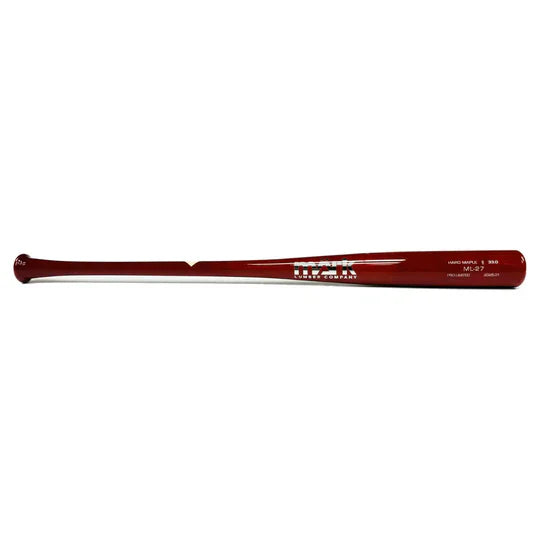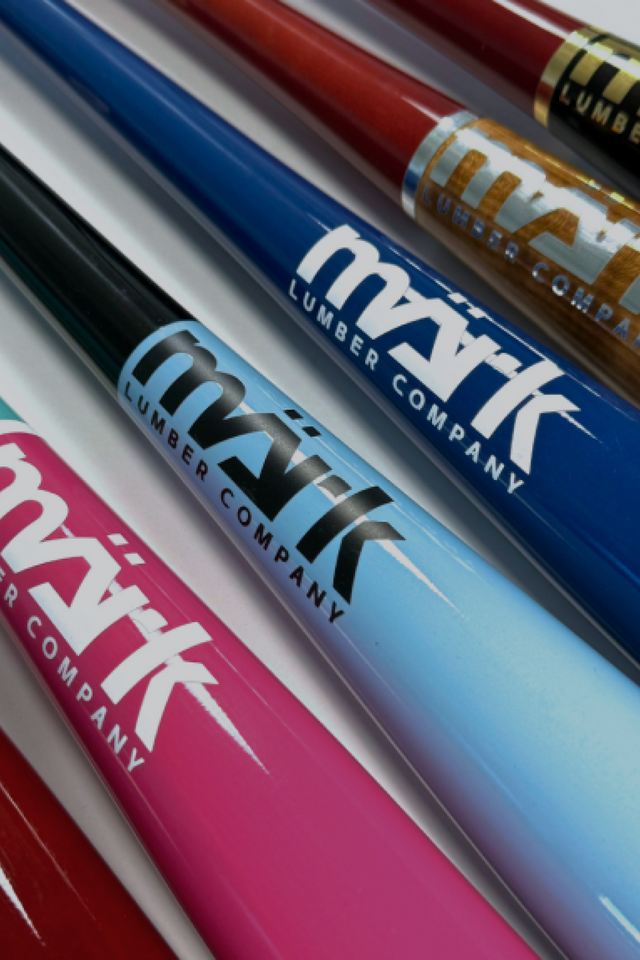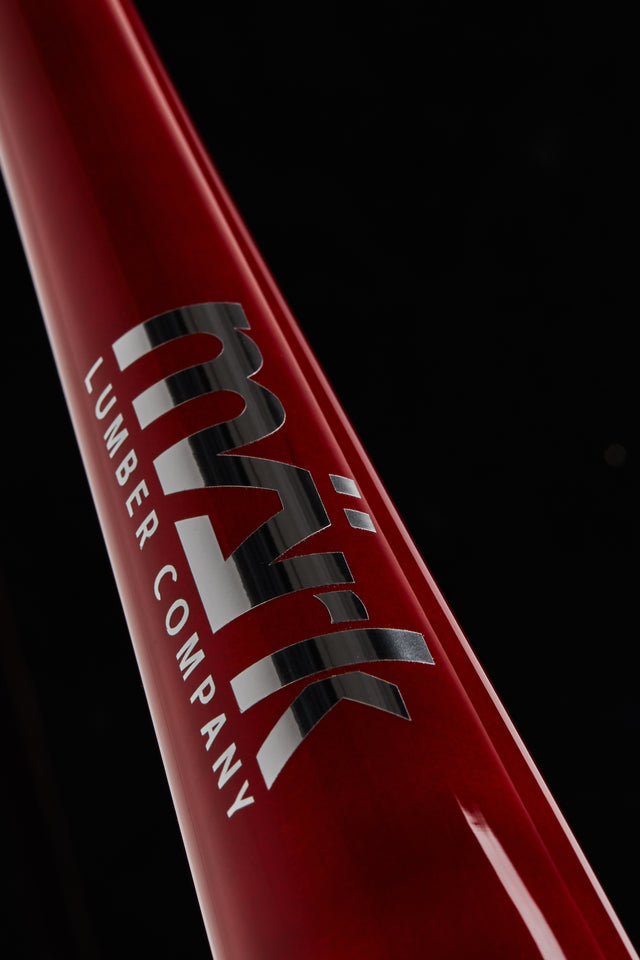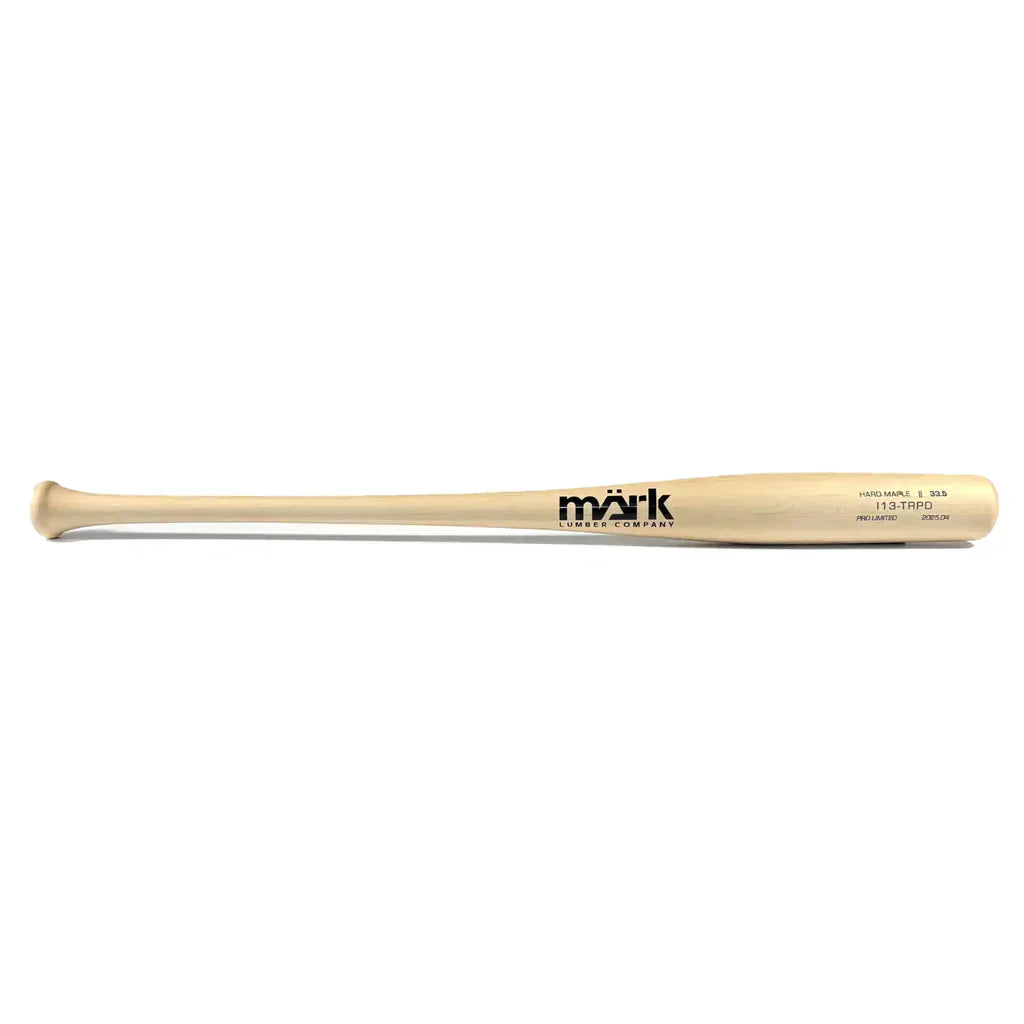
Baseball Bat Size Chart: Find the Right Bat for Every Age & League
Choosing the right baseball bat is key to peak performance, improved hitting fundamentals, and safety. Having the proper length and weight of the bat can make a difference in the game for any player. This comprehensive guide will scrutinize the ideal bat sizes by age group and league level so that players at any age will have just the right fit. Let's review the general baseball bat size chart, and we'll go into specifics for different ages, from Tee Ball to High School and College players.
General Baseball Bat Size Chart
The general rule for selecting the right baseball bat size is based on the player’s height and weight. The chart below provides a general idea of what size bat might work for players of different ages.
|
Player's Age |
Bat Length (in inches) |
Bat Weight (in ounces) |
|
4-5 years |
24"-26" |
12-14 oz |
|
6-7 years |
26"-28" |
14-16 oz |
|
8-9 years |
28"-30" |
16-18 oz |
|
10-11 years |
29"-31" |
17-19 oz |
|
12-14 years |
30"-32" |
18-20 oz |
|
15-17 years |
32"-34" |
19-22 oz |
Tee Ball Bat Size Chart (Ages 4-6)
Tee ball players need a bat that is light and easy to control. The ideal baseball bat length for players aged 4-6 typically measures 24 to 26 inches long and weighs 12 to 14 ounces.
|
Age Range |
Bat Length (in inches) |
Bat Weight (in ounces) |
|---|---|---|
|
4 years 25" |
25 inches |
13 oz |
|
5 years 25" |
25 inches |
13 oz |
|
6 years 25" |
25 inches |
13 oz |
Coach Pitch Bat Size Chart (Ages 7-8)
Players at this level are moving up from Tee Ball and beginning to learn pitching fundamentals. Knowing the right coach pitch bat size is crucial for transitioning smoothly.
|
Age Range |
Bat Length (in inches) |
Bat Weight (in ounces) |
|
7 years |
24" |
14 oz |
|
8 years |
25" |
15 oz |
Little League Bat Size Chart (Ages 9-12)
The ideal baseball bat length for Little League players is between 28 and 30 inches, and its weight ranges from 16 to 18 ounces.
|
Age Range |
Bat Length (in inches) |
Bat Weight (in ounces) |
|
9-10 years |
28"-30" |
16-18 oz |
|
11-12 years |
30"-32" |
18-20 oz |
Senior League Bat Size Chart (Ages 13-15)
Teenage players in Senior League baseball typically use 30 to 32-inch bats and weigh 18 to 20 ounces.
|
Age Range |
Bat Length (in inches) |
Bat Weight (in ounces) |
|
13 years |
30"-32" |
18-20 oz |
|
14-15 years |
30"-32" |
18-20 oz |
High School & College (BBCOR) Bat Size Chart (Ages 14-22)
For high school or college players, there are BBCOR standards, so players need bats that meet the high-performance requirement for metal or wood bats. The ideal length of a bat is 32 to 34 inches, and it weighs 19 to 22 ounces.
|
Age Range |
Bat Length (in inches) |
Bat Weight (in ounces) |
|
14-22 years |
32"-34" |
19-22 oz |
Comparing Baseball Bat Sizes by League Rules
When selecting a baseball bat, you should know the various league regulations on bat sizes. These rules are meant to ensure fairness, safety, and uniformity in the sport, and they typically are based on the player's age and the league requirements. From Little League to high school to collegiate baseball, understanding the regulations on bat sizes can make an enormous difference in your game. Let's break down the rules for some of the most popular leagues.
Little League Bat Sizes
In Little League, the bat regulations are strict to ensure that the players can comfortably hold the bat and master good swing technique. Under Little League rules, bats may not be over 33 inches long and have no barrel diameter greater than 2 1/4 inches. Little League games' bats should also be made of aluminum, composite, or wood. They should meet the USA Baseball Bat Standard and its approvals, like the USA Baseball stamp on the barrel.
-
Bat Length: Up to 33 inches.
-
Bat Diameter: Maximum of 2 1/4 inches.
-
Certification: USA Baseball or wood bat standards.
For younger players, lighter bats, typically 24 to 28 inches long, are recommended. The player's size and strength determine the bat weight. The right Little League bat size is significant for keeping your child comfortable and playing well.
High School Baseball Bat Sizes
The regulations for high school baseball are tighter than those for youth baseball because the players are advancing to a higher level of competition. The most significant difference is that BBCOR certification is necessary for all high school players for their composite or metal bats. BBCOR bats are designed to restrict the trampoline effect so that the bat will behave more like a wood bat to maintain fairness in the game.
-
Bat Length: Between 32 and 34 inches.
-
Bat Weight: Typically 19-22 ounces.
-
Certification: BBCOR (Batted Ball Coefficient of Restitution).
High school players are generally recommended to use a bat with a balanced swing weight to help them gain more control without losing power. All-metal or composite bats played in high school must have BBCOR certification, which ensures that the bats' performance is regulated.
College Baseball Bat Sizes

Like in high school baseball, college players have to use BBCOR-approved bats to deliver performance at a professional level. College baseball allows slightly longer bats because players are older and stronger. The BBCOR rule also seeks to preserve the game's equity and simulate wood bat performance.
-
Bat Length: Typically between 32 and 34 inches.
-
Bat Weight: Between 19 and 22 ounces.
-
Certification: BBCOR.
In college baseball, bats are typically chosen to provide power and control. The BBCOR certification limits the trampoline effect so that the ball is sent off the bat with a lower speed than a non-certified bat. This helps to make the playing field equal and ensures the game continues to be challenging and fair.
Common Mistakes to Avoid When Choosing a Baseball Bat
-
Choosing a Bat That's Too Heavy:
A bat that is too heavy will slow the swing and restrict control. Make the bat light enough so that the player can swing effortlessly and apply good mechanics.
-
Choosing a Bat That Is Too Long:
A bat that is too long is hard to handle and leads to poor swings. Choose a bat that allows the player to swing comfortably with good technique.
-
Oversight of Bat Material and Performance Requirements:
Wood, aluminum, and composite bats vary in strength. Choose the material based on the player's level of competence and league rules. Lighter metal or composite bats are perfect for lower levels, but wood bats are ideal for higher levels.
-
Not Accounting for Player Development:
Players multiply, and a bat that is appropriate now might not be optimal in a few months. A good coach pitch bat size for 7-8 year olds may not be suitable for older players. Choose a slightly shorter or lighter bat for younger players and switch as they grow.
-
Only Brand Without Fit:
The brand of the bat matters less than how it fits. Choose a bat based on size, weight, and feel rather than brand name.
Choosing the Right Size Bat
In choosing the appropriate size bat, not just age but also height, weight, and experience level need to be considered. How to size a baseball bat depends on these factors to ensure proper swing mechanics. Younger players utilize lighter bats for correct swing mechanics. Once they advance to older levels and become stronger, they can gradually move to heavier bats to further increase their power for hitting.
Refer to the youth baseball bat size chart or the youth bat size chart as a general guideline to help select the proper size bat.
Why Choose Mark Lumber for Your Baseball Bat Needs

Mark Lumber offers a premium line of wood baseball bats to bring players the best performance and durability. Whether you are a starting athlete or a successful high school player, Mark Lumber's handcrafted wood bats are made with the finest materials to ensure strength and dependability on the field. With a focus on craftsmanship and attention to detail, our engineers strive to reach their peak in hitting capability, control, and comfort. Not only are our bats made to perform, they are made to endure, delivering long-lasting performance for players of every level. With several levels of customization, players can select a bat that best suits their style and preference.
We are committed to making bats that bring out the best in a player's natural ability, allowing them to play at their best. In addition, our dedication to sustainability enables us to make every bat with consideration for the player and the world. By choosing Mark Lumber, you're choosing a trusted partner on your baseball journey, with bats that lift your game to new levels and give you the confidence to thrive.
FAQ
1. How do I know what size bat I need for my child?
To determine the ideal bat size for your child, you need to look at their age, height, and weight. The guideline is that younger children must use lighter and shorter bats, and older children and teenagers can use longer and heavier bats. Refer to the general youth baseball bat size chart for guidance and check if the bat feels comfortable during practice. A bat that is too heavy or too long can hinder the swing mechanics. Swinging the bat should be relaxed, and the player should have enough control to make solid contact with the ball every time. If the bat is too heavy, your child might be unable to swing it effectively, while a bat that's too light might not provide any power. Always make sure that your kid can swing the bat under control and with form so that they can develop proper hitting mechanics.
2. What’s the best bat for a 7-year-old?
For a 7-year-old player, choosing a bat that balances lightness and length is essential, helping the child develop proper mechanics without compromising control. Typically, a bat length of 26 to 28 inches and a weight of 14 to 16 ounces will work well. This size allows the young player to swing the bat with sufficient control while still developing the skills to hit the ball with power. A light bat is essential at this age since it will give the player increased swing speed and enable easier swings, even while still learning to hit. It is necessary to ensure that the bat is well-balanced and easy to manage. Most youth leagues at this age also employ tee-ball-type bats, which are made to assist players in developing their swing mechanics. Take the bat to practice to ensure it is the right size for your child.
3. What is the difference between a wood and a metal bat?
The primary difference between a wood bat and a metal one is the materials and their impact on performance. Wood baseball bats are traditionally used in professional leagues, providing a more classic, vintage feel. The bats are made of solid wood pieces, often maple, ash, or birch, and are famous for their strength and endurance. They are, nevertheless, heavier and require a more significant level of skill to operate effectively. Metal bats, commonly made from aluminum or composite material, are lighter and have a larger sweet spot, making them more straightforward for junior or less accomplished players. Metal bats are usually employed in youth leagues, high school, and college since they allow the players to hit the ball quickly and harder. They are also stronger than the wood bat, which cracks or breaks when used repeatedly. The hook is that the metal bats produce a more accentuated trampoline effect, or the ball is released from the bat faster, which may not be suitable for the requirements of the professional or skilled levels of competition.
4. What bat should I use for high school baseball?
The players must use BBCOR (Batted Ball Coefficient of Restitution) certified bats for high school baseball. They are high-performance bats that are designed to minimize the trampoline effect of the barrel for safety and fair play. The high school players will typically wear a bat with a length of 32 to 34 inches and a weight of 19 to 22 ounces. BBCOR bats are made of either composite or aluminum materials. They are designed to provide the player with the feel of a wood bat with the added performance and durability advantages. BBCOR certification is needed because it ensures that the bat will not have an excessively high exit speed on impact of the ball being struck. The certification is necessary to maintain fairness and safety in the game. High school players need to select a bat that matches their specific style of play, whether they are contact hitters or power hitters, and a BBCOR bat provides the ideal blend of control and power for high school players.
Conclusion
The right bat is necessary for both performance and the player's safety. Please refer to the provided baseball bat size chart to help make the right choice in determining the best bat for your child or team. Choosing the correct size bat will improve field performance, safety, and fun. By selecting the right bat, players can improve their swing mechanics, gain more control, and prevent injury. Ensure the bat suits the player's strength, size, and skill level to maximize their game experience.




